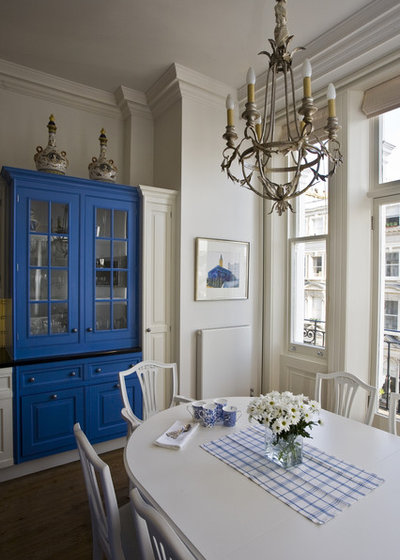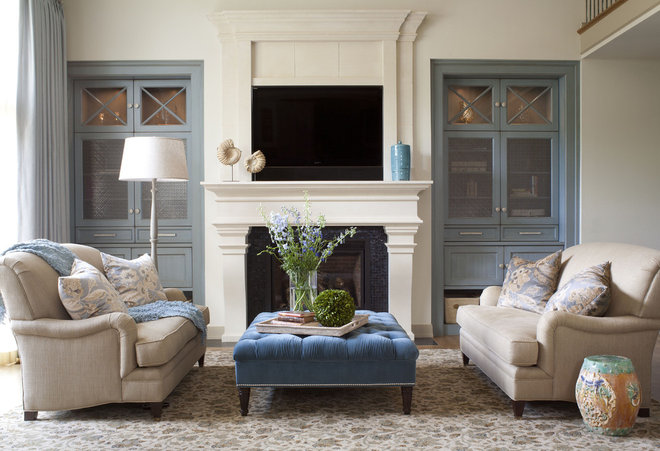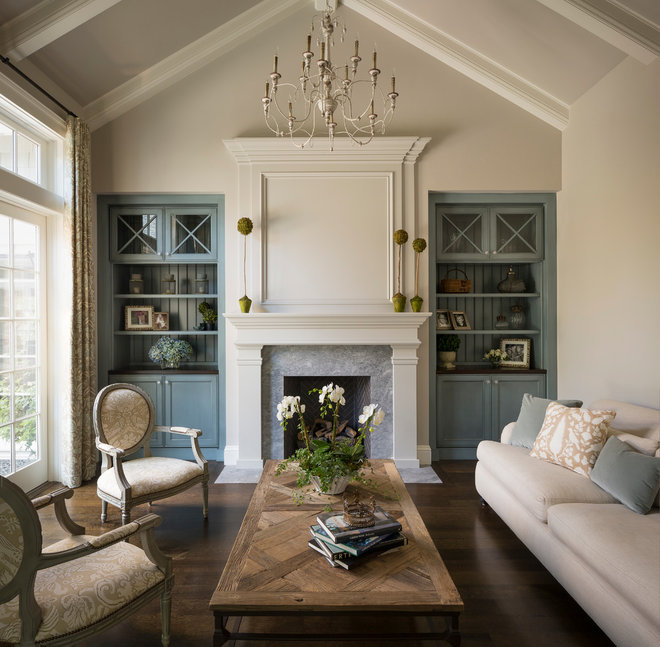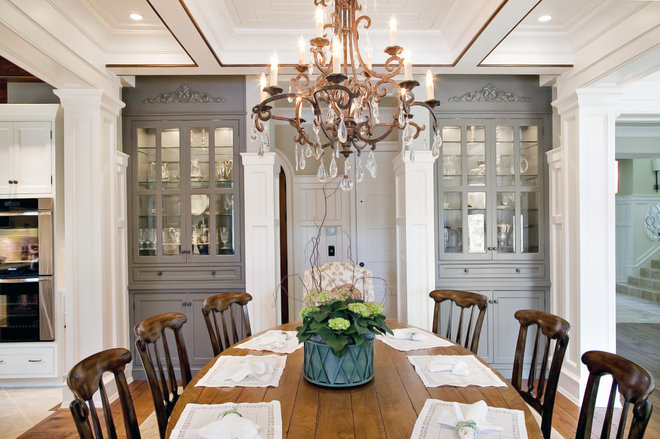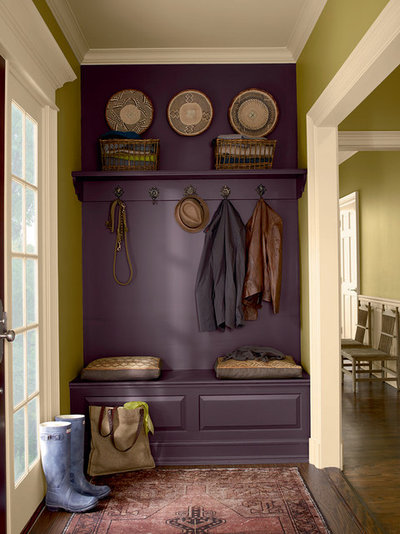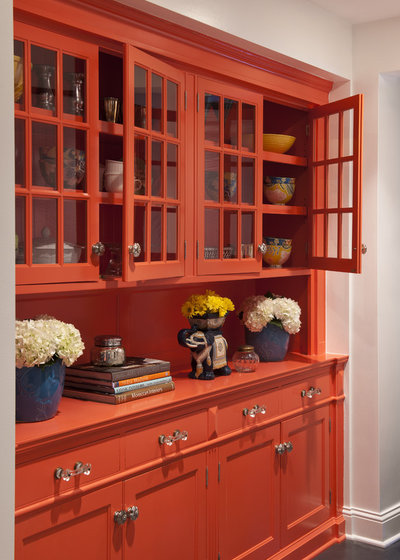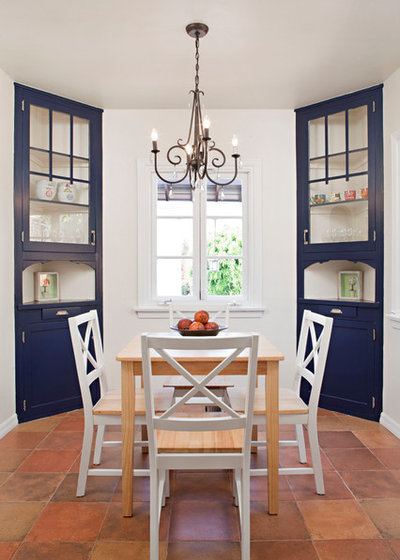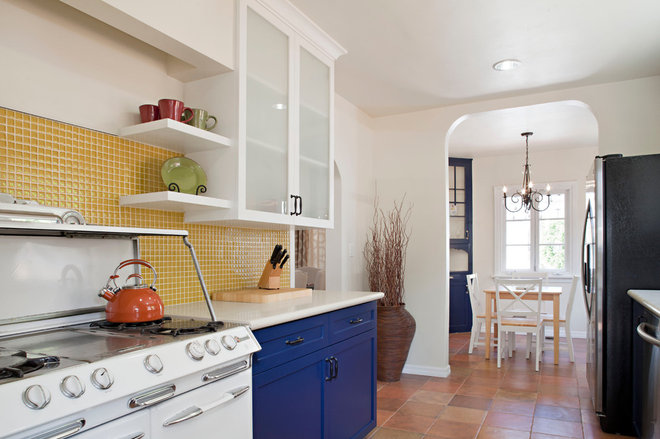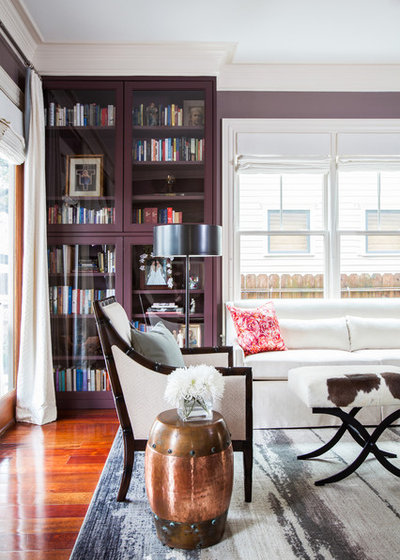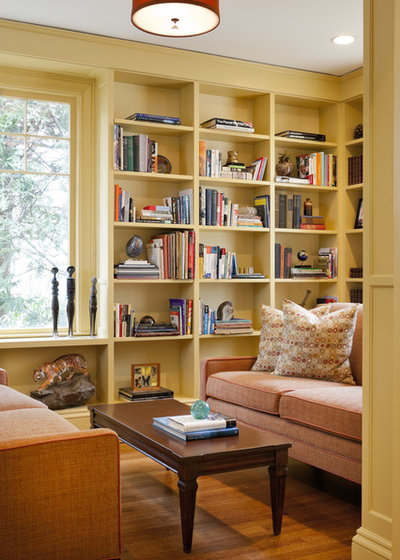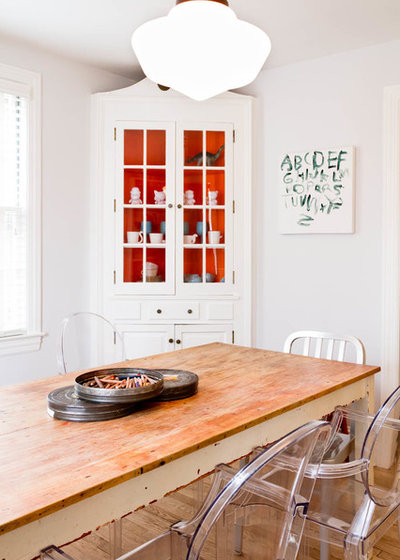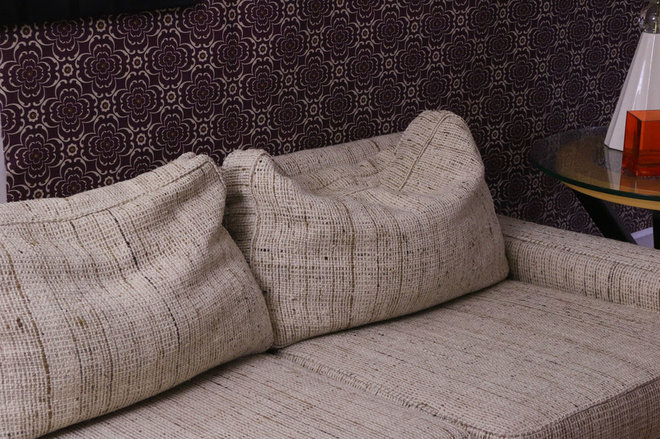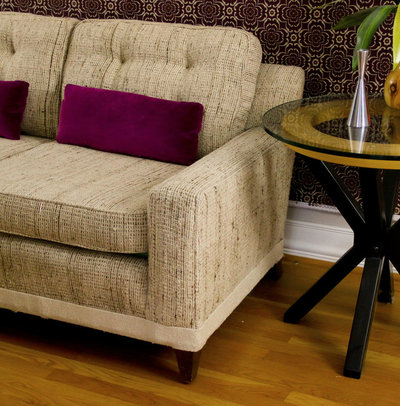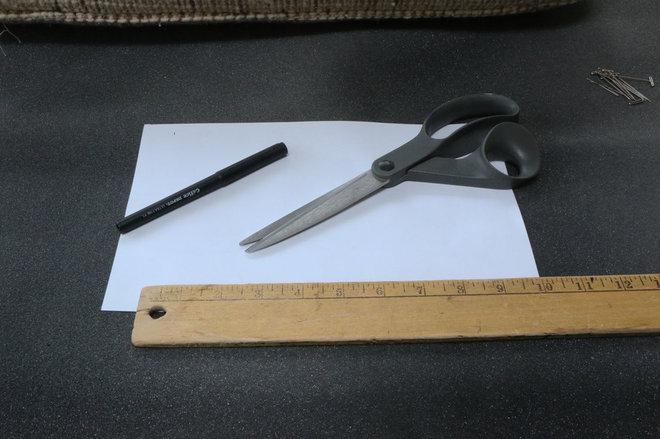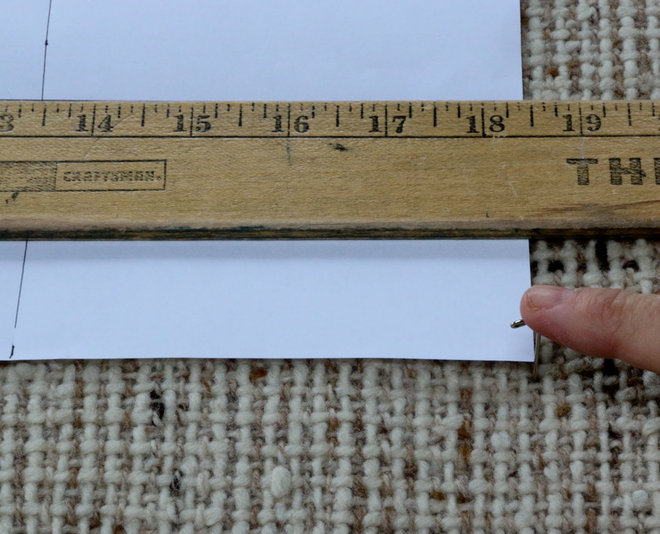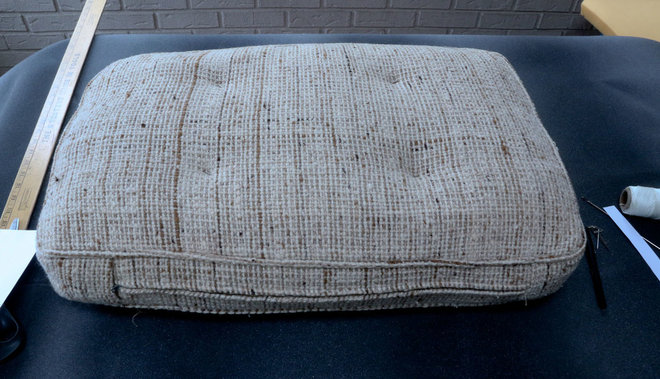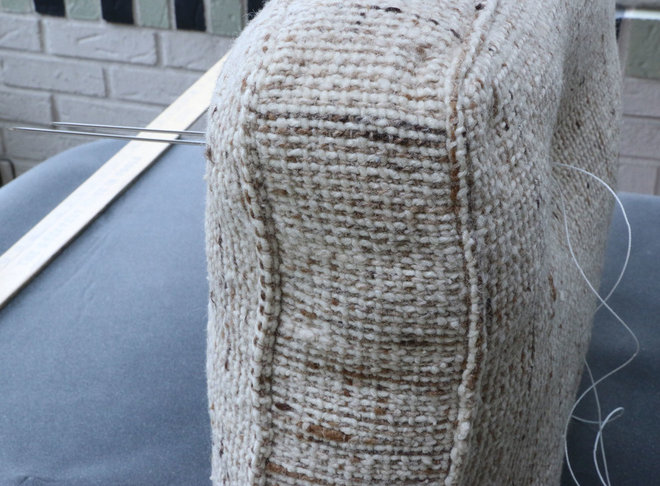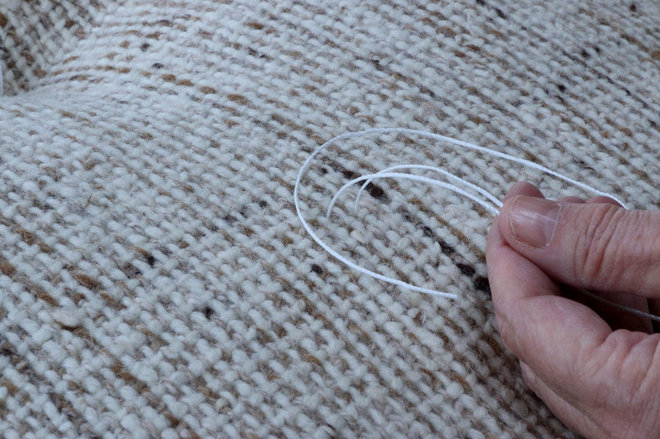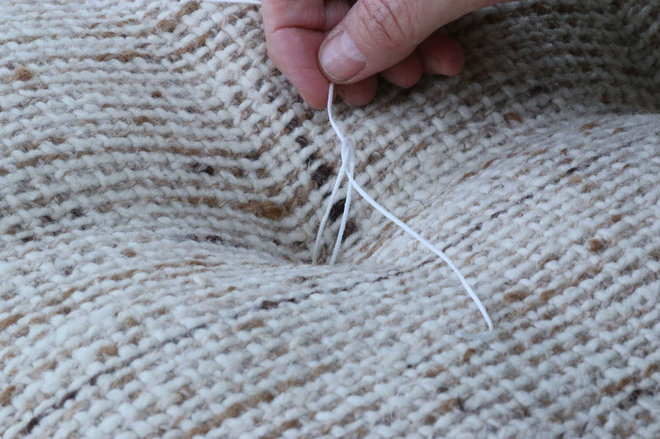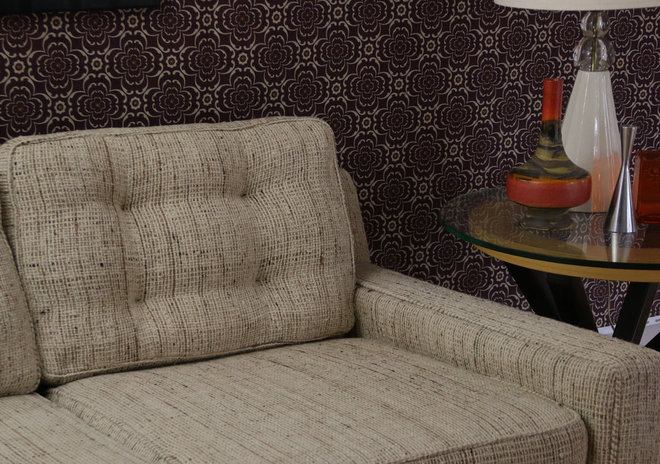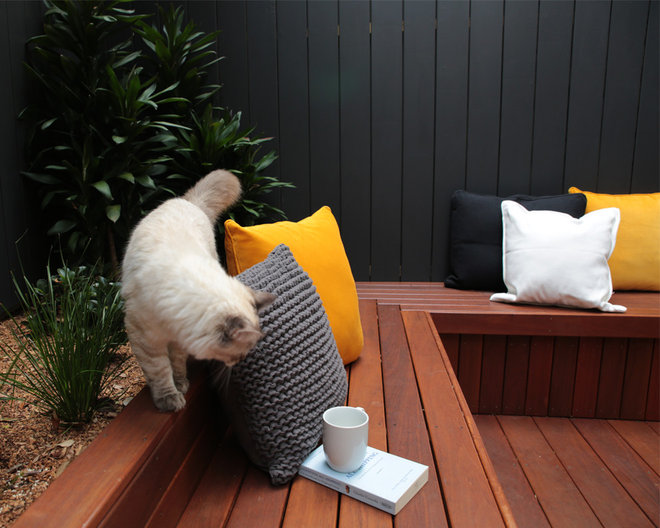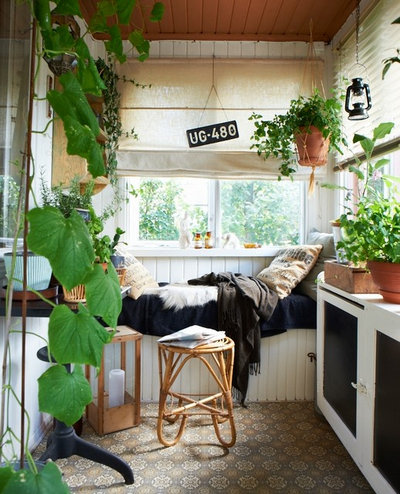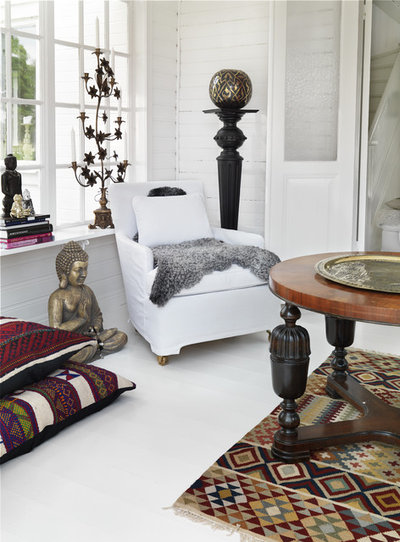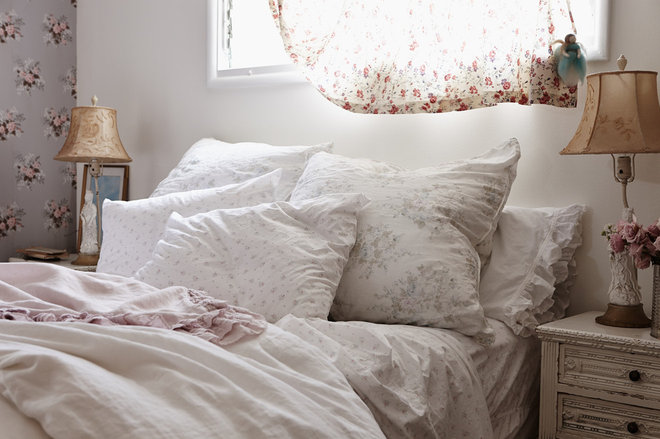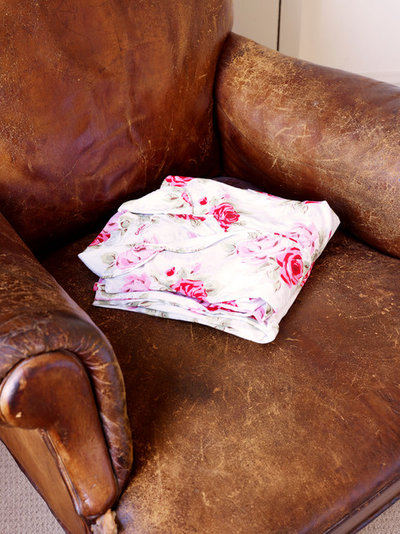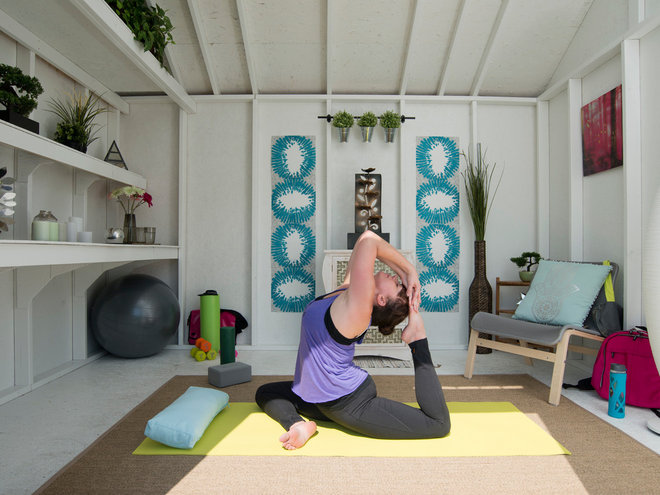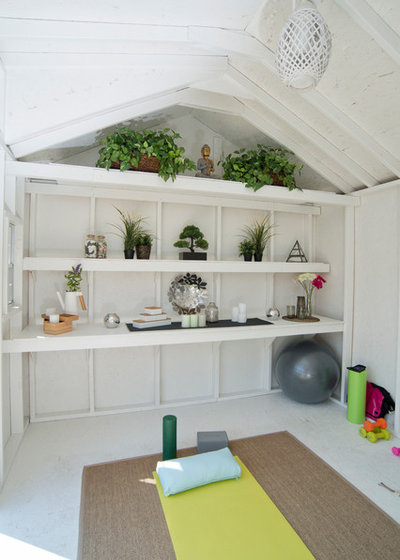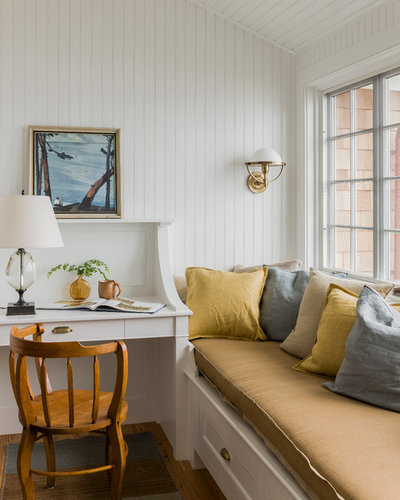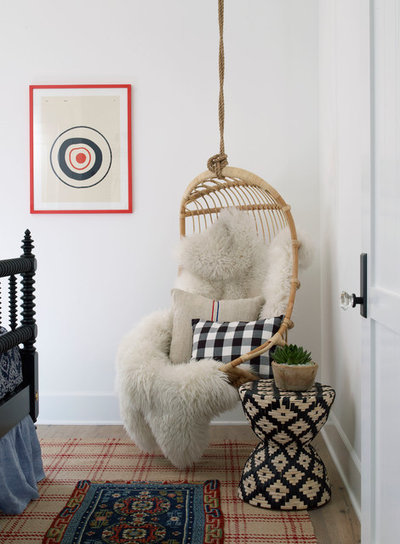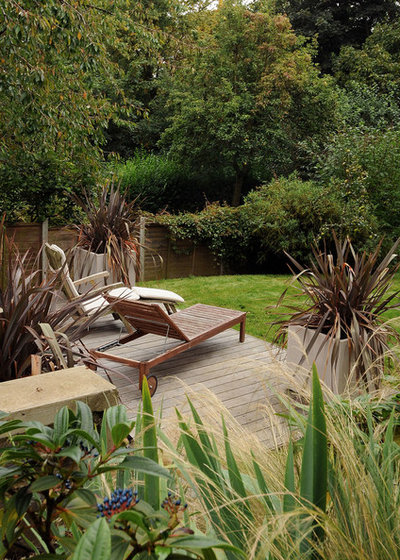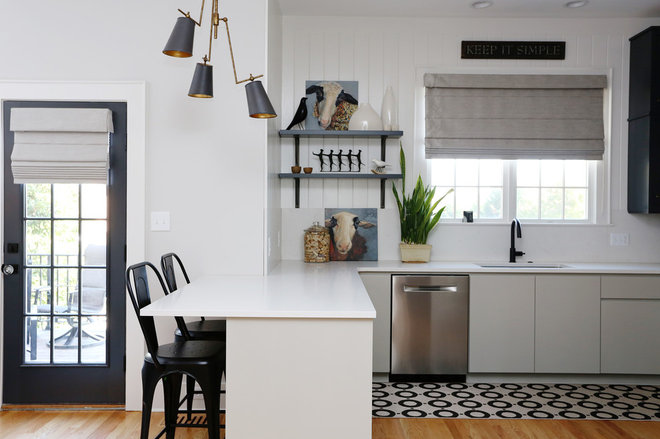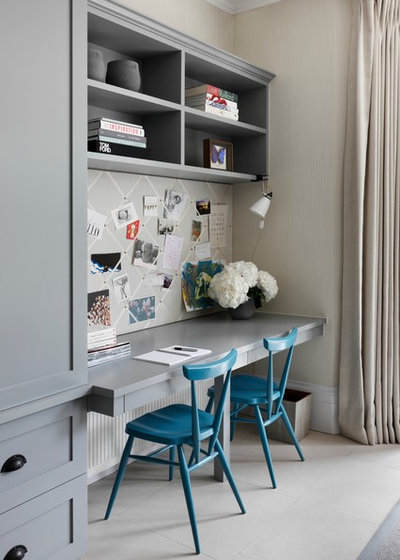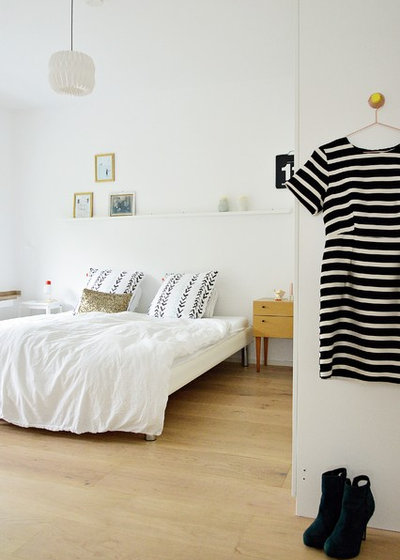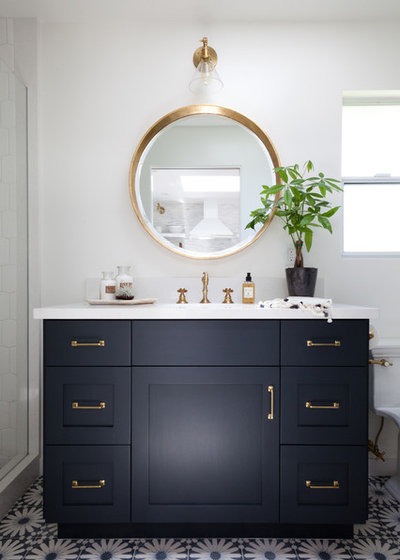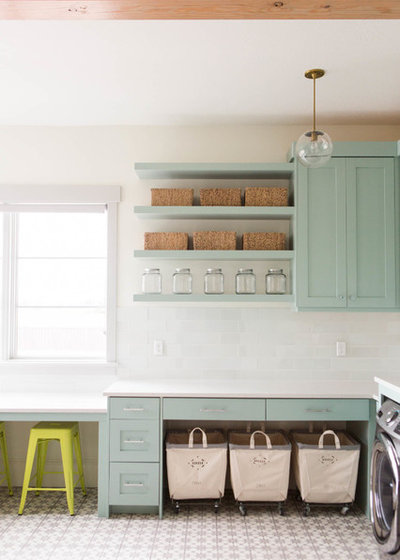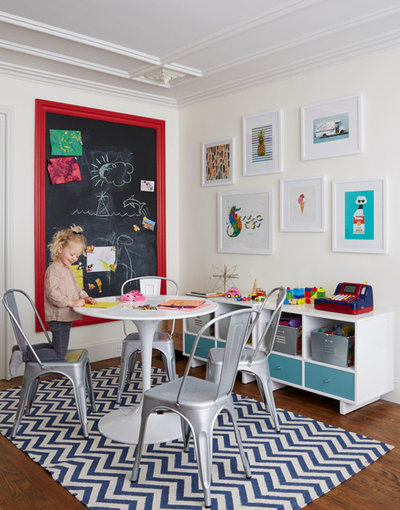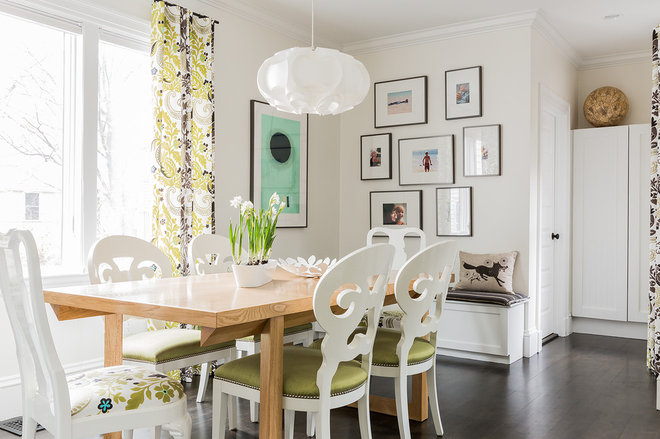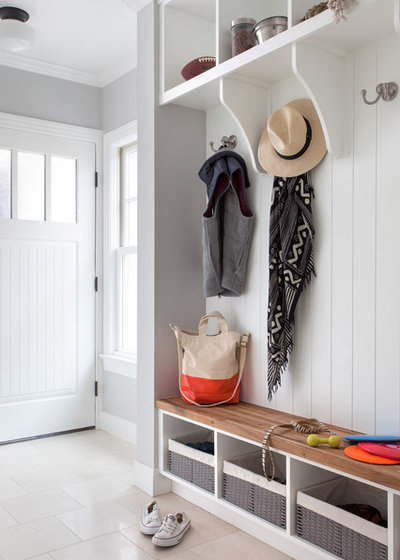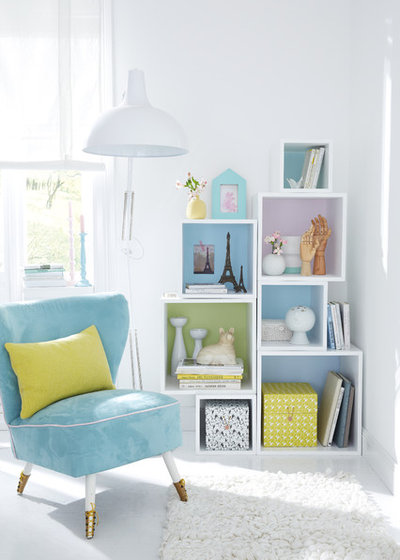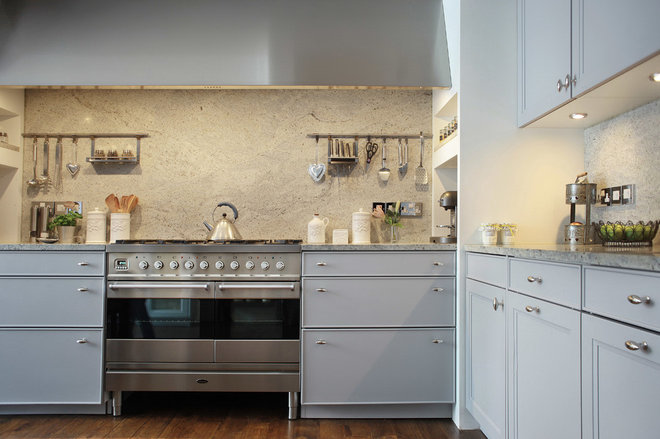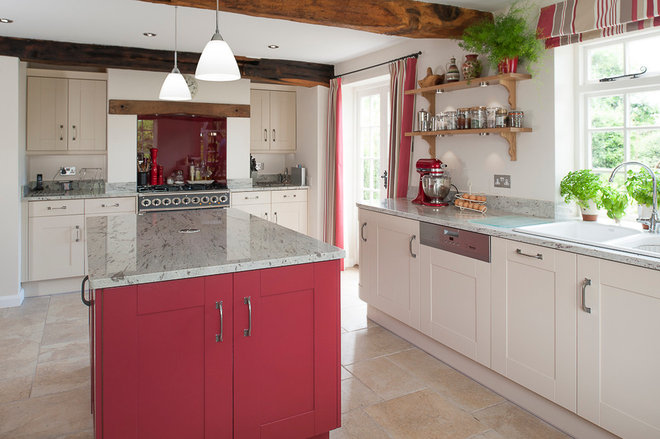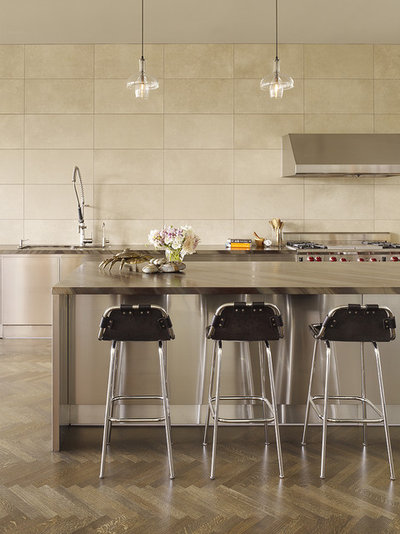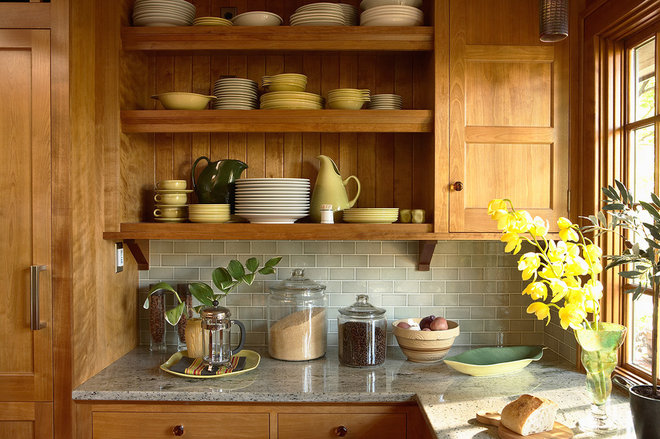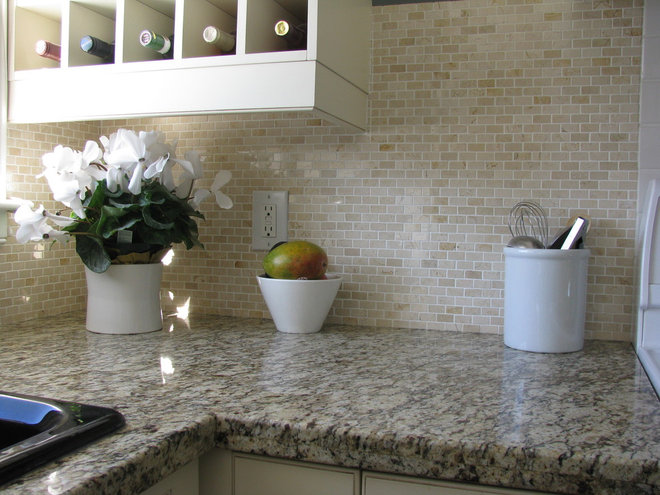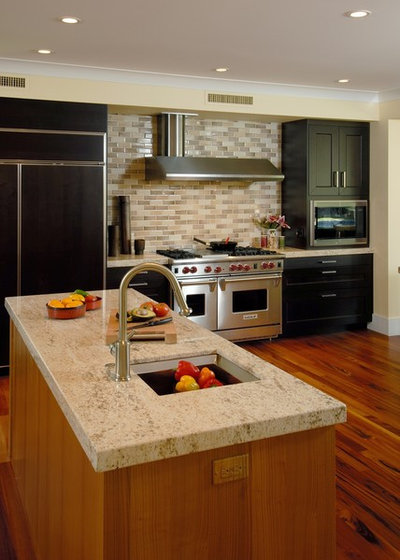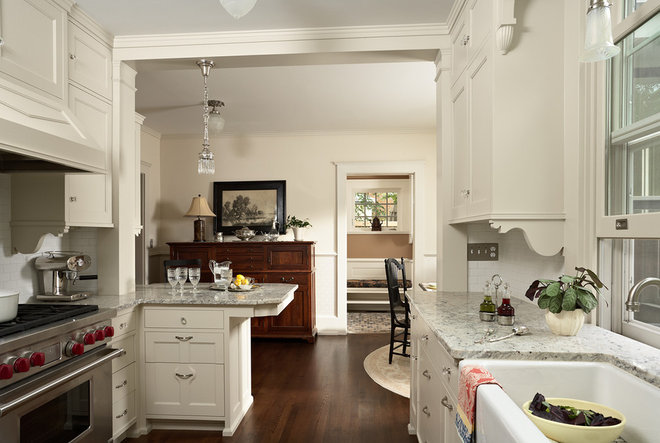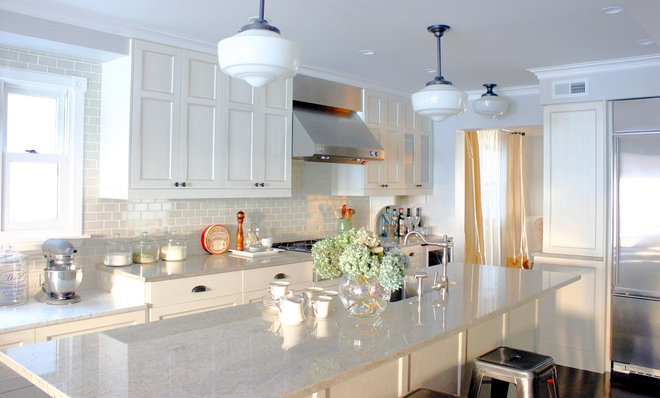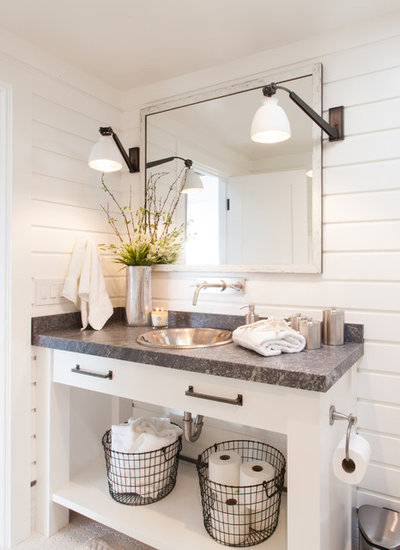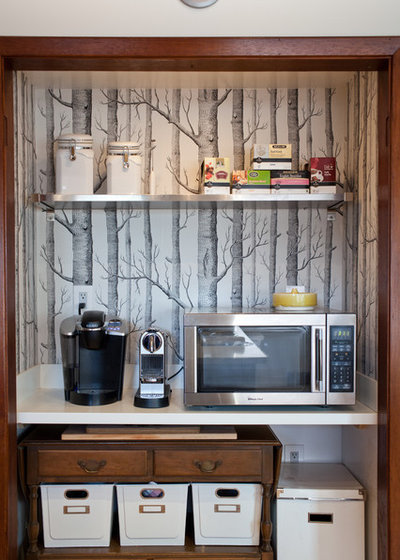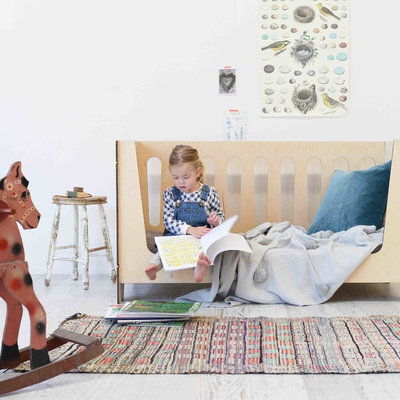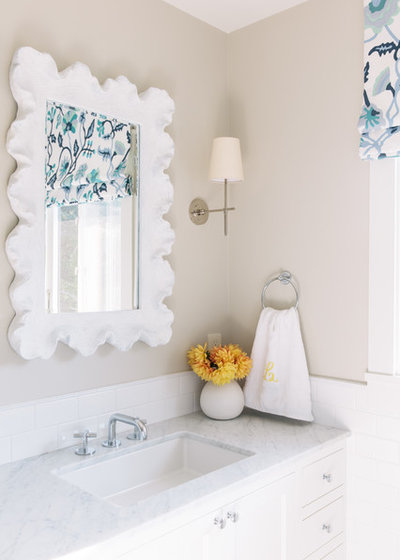Tag Archives: Real Estate Agent
10 Creative Ways to Work With a Sloped Lot
Furniture Clinic: End the Curse of Slouchy Couch Cushions
My big problem piece is a sofa from the mid-1970s that I haven’t had time to repair or reupholster. To get one more year out of it, I updated the loose back cushions with symmetrical tufting. This is a quick, easy trick that I tried out on a love seat last year with amazing results. You just need a tufting needle, tufting twine and basic sewing skills.
Boxed-back cushions tend to get saggy because the cushion inserts are usually sewn with a baffle straight across the center. The baffle acts as a shelf and keeps the fiberfill from sinking down to the bottom of the cushion. When the filling is new, fresh and unmatted, it looks and feels great. But over time, the filling in the top channel sinks to the bottom of that channel, and the filling in the lower channel sinks to the bottom of that channel.
That’s what had happened to this sofa. No matter how many times I fluffed the cushions, they always ended up slouched down.
Determine the number and spacing of your tufts — I did four, evenly spaced, in the center of the cushion. Then measure and cut a template on a piece of white paper, so each cushion will be exactly the same.
How to Carve Out a Corner Designed Just for You
5 Tweaks for Updating Your Wood Deck
Whatever refinishing method you choose, know that moisture invites organisms into the wood that cause it to rot over time, so remove and clean up anything that is allowing water to collect in parts of the deck. Also, repair anything that may be habitually splashing water onto the deck, such as a leaky hose spigot.
To winterize, clean your deck of debris and remove and store your outdoor furniture in a dry place. Leaving your furniture out during the wet winter months can cause it to wear down more quickly.
You will likely need to hire a carpenter or contractor to help you design and install new railings, because they consist of detailed parts and connections. Have an idea of the railing type you want installed, and ask for product and design recommendations from the professional you hire. Also, check that your preferred railing type meets local codes before having it installed.
Keep water from pooling under your containers by placing a saucer beneath them to collect excess water or raising the containers off the deck.
Be aware that large containers can add a significant amount of weight to the deck, so it’s best to locate large, heavy containers over structural beams. Always consult a professional if you are unsure of your deck’s weight capacity.
Your Clutter-Clearing Plan for the New Year
With an entire new year ahead of you, decluttering your home may not seem so hard. But after January, when that new year energy begins to wane, the prospect of tackling such a big project tends to overwhelm.
Enter your New Year Clutter-Clearing Plan, a month-by-month guide to clearing the clutter from every room in your house. I’ve zeroed in on areas of the home that I find fit with certain events, such as back-to-school or spring fashion, but feel free to reorganize as you see fit to tackle specific areas of your home that need attention sooner.
No matter what, by the end of the year, your home should be feeling more spacious and, perhaps more important, you should be feeling more capable of maintaining a clutter-free space.
Getting started: Turbocharge your decluttering. If you’re feeling inspired and motivated by the new year, take advantage of that energy and spend a few weekends clearing clutter throughout the house. Making noticeable headway will help motivate you to keep up the decluttering effort in the coming months. Try to get the other members of your household onboard — but if they are not interested, don’t try to force it. Hopefully they will see the positive changes happening around the house and change their tune!
Habit to cultivate: Keep an empty reusable bin in a closet, and use it to corral items you plan to give away.
January: Kitchen and pantry. Give yourself a fresh start for the new year with a clean kitchen, decluttered cabinets and a healthy pantry and fridge.
- Toss worn dish towels or cut them up to make rags
- Sell or give away specialty small appliances and tools you seldom or never use
- Recycle or toss freebie cups and Tupperware containers without lids
- Toss expired food and spices
- Take stock of cookware and dishes; give away or sell pieces you do not need
Habit to cultivate: Clean out the pantry and fridge each week before shopping.
February: Home office — digital documents and papers. Get a jump-start on tax time by getting your files (paper and digital) in order.
- Sort through random stacks of paper; file, shred or recycle everything
- Streamline your files, shredding any documents you no longer need
- Use one calendar to keep track of all events
- Switch to paperless bills and statements if possible
- Clean out computer files and back up everything, using cloud-based storage and an external drive
Habit to cultivate: Sort your mail at the door, tossing junk immediately into a recycling bin.
March: Clothes and accessories.The seasonal transition is a good time to sort through clothing. Sort through winter clothes before storing, and pare back spring and summer clothes as you begin to wear them.
- Donate or sell clothes, shoes and accessories in good condition
- Have winter clothes laundered or dry-cleaned before storing until next year
- Try on all clothes for the upcoming season and give away or sell any items that do not make you feel good
Habit to cultivate: As soon as you wear something and notice it doesn’t fit, has a hole or doesn’t flatter you, toss it in a bag in your closet. When the bag is full, donate it.
April: Bath and beauty products and medicine cabinets. Give your daily routine a spring cleaning by sorting through all of those bottles and jars hiding in medicine cabinets, on counters and in drawers.
- Toss expired makeup and skin-care items, as well as anything you do not use or like
- Clean drawers and shelves before returning items
- Store heat- and moisture-sensitive items (medications and some skin-care products) away from the bathroom
Habit to cultivate: Keep a list of your favorite bath and beauty products and order them online rather than shopping in person. This helps avoid overshopping and impulse purchases.
May: Laundry room, linen closet, cleaning supplies. Cleaning routines are much easier and more pleasant when the supplies you need are neat and orderly. Sheets, towels and other household linens do not last forever — go through them this month and make some space.
- Recycle worn-out and stained towels, washcloths, sheets and tea towels at a textile recycling center — search for one near you through the Council for Textile Recycling
- If your child has graduated a bed size, donate the old bedding to charity
- Clean under sinks and in any cupboards where cleaning supplies are stored. Get rid of empty containers and products you tried but did not like
Habit to cultivate: Don’t downgrade old towels and sheets to “guest” status. Only keep linens you would personally want to use — get rid of the rest. Your guests deserve better!
June: Family room, playroom, media, art and schoolwork. The end of the school year is a good time to review collected artwork and school papers, and choose a small number of special pieces to save in a portfolio or document box.
- Edit schoolwork and art from the past year
- Gather a bag of DVDs, books and CDs to give away or sell
- Sort through toys and games; get rid of those your family no longer enjoys, as well as anything missing key pieces
Habit to cultivate: At the beginning of each school year, pick up a simple art portfolio. When your child brings work home, enjoy all of it for a while, but choose only a few special pieces to put in the portfolio.
July: Yard, shed, garage and tools. Being outdoors in midsummer makes this a good time to get outdoor tools and equipment in order.
- Get rid of broken tools and those you no longer need
- Sort through gardening supplies
- Toss worn-out outdoor furnishings and decor
- If you’ve been collecting items to sell, hold a yard sale this month. At the end of the day, take unsold items to a charity donation center
Habit to cultivate: Keep everything in your garage or shed on shelving, not on the floor. This helps prevent accumulating a pileup of junk and keeps your gear cleaner.
August: Photos. Photos seem to be one of the most problematic items for many people to keep organized. Use the lazy days of August to sort through old photos and make books or prints from new ones.
- Choose a few favorite photos from this year and have them framed
- Edit digital photos and back up using a cloud service as well as an external drive
- Make a photo album or book from recent photos
- Sort through any bins of loose photos and put them in acid-free photo boxes or simple albums
Habit to cultivate: Take a few extra moments to tag favorite digital photos each time you upload. Then when it’s time to print or make an album, you can go straight to your favorites.
September: Mudroom, entrances and junk drawers.Embrace the back-to-school spirit (whether or not you have kids) by getting the busiest zones of your house clutter-free this month.
- Put away stray items in entrances that belong elsewhere
- Add extra hooks or shelves if you need them to help corral items
- Sort through junk drawers, baskets, trays and any other spots that accumulate random junk
- Invest in drawer organizers or a wall-mounted organizer to keep small items neat
Habit to cultivate: Do an end-of-day tidy-up of the entryway, putting shoes, coats and random items back where they belong.
October: Dining room and entertaining supplies. With the big holidays coming up over the next few months, October is a good time to get ahead of the curve and sort out your entertaining arsenal.
- Get rid of worn-out and stained tablecloths, placemats and napkins
- Count your dinnerware and serving pieces and consider whether you have enough, too much or too little for the amount you entertain
- Get rid of decor, table linens and serving pieces that you don’t like or that no longer fit your lifestyle
Habit to cultivate: Just like creating a wardrobe with lots of pieces that work together, think of creating an entertaining wardrobe that you can mix and match, rather than having lots of distinct sets of dishes.
November: Hobbies and crafts.Get ready for holiday crafting and gift wrapping by clearing out your stash and organizing supplies this month.
- Clean out gift-wrapping supplies, tossing empty tape dispensers, out-of-ink pens and shreds of gift wrap and ribbon
- Downsize your craft stash by donating spare fabric scraps, yarn, scrapbooking paper and other materials — many organizations (schools, retirement centers and the like) are happy to accept donations of craft supplies, and there are even some craft-specific donation centers, like Scrap in San Francisco
- Keep works in progress together in bags, bins or boxes
Habit to cultivate: Take the time to put away your craft supplies neatly when you are done working. A messy stash makes it more likely you will buy something you already have simply because you couldn’t find it!
December: Holiday items and decor. With so much going on around the holidays, it’s wise not to expect too much of yourself when it comes to clutter-clearing. That said, with all of the new gifts coming in, it does make sense to do some paring back to preserve balance in the house.
- Give away holiday ornaments and decor that you did not use this year, or that you no longer love
- Toss broken ornaments and strands of lights that no longer work
- Exchange or give away gifts you received but know you will never use, and do not like — don’t keep things out of guilt. The one exception to this rule may be hand-knit sweaters. The knitter will never forgive you; that’s just how it is.
Habit to cultivate: Tell friends and family who ask (in advance of the holidays) that you and your family would prefer gifts that are experiential or edible. Most people honestly want to give you something you will like, and are happy for the guidance.
Originally Published on HOUZZ, by Laura Gaskill
Light up Your House for the Holidays, Not Your Energy Bill
“When it’s time to decorate, or replace some of your old lights, consider these for your new lighting ideas.”
Denise Buck & Ed Johnson – DC Metro Realty Team
These energy-conscious lighting tips will help you save some money on your energy bill this holiday season, leaving you with more funds to spend on loved ones.

The holidays are a fun, but often expensive, time of year. It’s easy to blow budgets on gifts for loved ones and on electric bills by making the season bright. Fortunately, saving money during the holiday season can be just as simple with a few energy-conscious lighting tips.
Look on the bright side
Substituting new LED holiday lights for run-of-the-mill incandescent holiday lights can give you big savings and make a big statement. LED (or light emitting diode) lights are brighter than traditional lights, and they last longer while using far less energy. In fact, LED light strings can use 90% less energy than regular incandescent lights and last about ten times longer. When you shop, just make sure you’re getting what you pay for. Look for government and industry-approved energy-saving logos.
No matter what you choose, buying holiday lights can be expensive. So keep your eye out for manufacturer rebates and coupons, and be sure to check with your local utility provider to see if they offer any special rebates for LED decorations.
Besides being energy efficient, LED holiday lights offer other important advantages. They’re cooler than incandescent lights (which can help reduce fires), have no filament or glass to break and can help prevent overloading sockets when you string them end-to-end. And believe it or not, using energy-efficient holiday lights like these can even help reduce carbon dioxide emissions.
Remember, you don’t have to limit your energy savings to just around the holidays. Using LED bulbs is a smart, energy efficient choice any time of the year for lighting inside and outside your home.

Timing is everything
You can further reduce your holiday electric bill by limiting your light display to “primetime” hours. Extension cords with built-in timers can easily be found in most hardware stores. Make sure they’re suitable for outdoor use. Then, simply plug in your lights and set timers to turn on when it gets dark and switch off at bedtime. No sense lighting your home when few people are around to enjoy it. The same holds true at other times of the year with your standard outdoor lights. Instead of a timer, you can even use a motion sensor. That way, your outdoor lights will only go on when triggered.

Consider solar
Depending on how much sun exposure you get, solar-powered lights can be a great energy-saving solution. Even in winter, these lights can soak up enough sun to light up an outdoor tree without relying on electricity.

Get more bang for your buck
Here’s a smart tip to pump up the light without bursting your electric bill: Strategically place reflective ornaments or tinsel to bounce light in multiple directions. This will create a dazzling shimmery effect that tricks the eye into seeing more lights than are actually there.

A little can go a long way
Here’s another efficient way to create lots of visual drama without having to add tons of additional lighting. Simply, use colored flood light bulbs in place of standard outdoor floods. You can find a variety of festive colors such as red, green and blue. Then, position the lights so they bathe your home’s exterior in a warm, cheery glow.
You can achieve a lot with dramatic up-lighting. Focus them on your home or seasonal planters positioned along a walkway. Try flanking your front door for an added effect.
If that’s a little too much for your taste, just substitute colored light bulbs in a few of your exterior fixtures, such as on your porch, above your front door or outside your garage. You’ll get pops of festive color with a more subtle effect.

Light the night with luminarias
During the holidays, you’ll often see these glowing lanterns in rows along a sidewalk or leading up a walkway to a front door. Luminarias are often made from brown paper bags that are weighted down with sand and lit from within by candles. A safer energy-efficient solution would be battery-powered LED luminarias. They’ll still create a classic, warm and welcoming feel, just in a modern and eco-friendly way.

Create a warm glow
Speaking of battery-powered candles or candlesticks, using them in your front windows can also add light with limited energy use and cost. Look for scented varieties to add another layer of cheer. Create a warm glow throughout your home with holiday-themed votive holders illuminated with actual votive or battery-operated tea-lights. Many of these flameless options are made to mimic the flickering of a real candle, so you can enjoy all the atmosphere without any of the worry that comes with a real flame.
With so many wonderful options available today, you can be energy-conscious AND festive without having to compromise. Follow these energy conservation tips this holiday and, perhaps, you’ll be able to splurge on an extra gift just for yourself.
Originally published by American Homeshield
How to Choose a Backsplash for Your Granite Counters
So you’ve chosen granite countertops for their beauty and durability, but now you’re stumped about what to use for your backsplash. Granite is a tricky one. There are so many different color and pattern choices. Some are very busy, while others are subtle. Some are dark; others are light. Some have large swooping vein patterns, while others are dotty or splattered.
Each slab is unique, so it’s not possible to make sweeping generalities about what works with every piece of granite. But if you look at why and how these pairings are pleasing, you’ll get some good ideas for a material to pair with the particular stone you’ve fallen for.
Likewise, Ivory Fantasy granite adds a rich, natural texture below these light wood cabinets. The range wall is where you’ll get the most bang for your buck, giving the wall an easy-to-clean surface and the room a seamless look.
When considering this, look at the whole slab and choose the part you want to highlight. There may be a distinct part of the pattern you’ll enjoy seeing on the wall.
Bar stools: vintage, Charlotte Perriand; pendants: Alison Berger
Tile: Ashbury Collection in Breakwater, Sonoma Tile
Glass tile. The gloss of glass tile complements many granites. Consider a neutral tone that’s a close match for the main color field in the granite. The understated soft green of this tile highlights why Colonial Gold granite was a good choice.
Colonial Gold granite: Meta Marble & Granite; 4-inch-by-12- inch Glacier glass tile in 45/Raw Silk color: Stone Source
Crema Marfil mini mosaic tile. This one may seem counterintuitive (no pun intended), but the small tile in this elegant material plays nicely with the Santa Cecilia granite here. It might seem like they would be two busy patterns, but the material and coloring of the backsplash is a calming counterpoint (pun intended).
Crema Marfil tile, honed: Oregon Tile and Marble; granite: Santa Cecilia
Here is the same idea with a larger-scale tile. Note that the pattern and color variation of this granite is less distinct than the one in the previous photo, so it can take on the more powerful backsplash. These pairings are all about finding the right balance.
Tile: Mizu Umi collection in Tea, Honey, Tatami and Rice Paper,Walker Zanger; granite: Kashmir White
A simple tile with eclectic accents. Plain subway tile might have been too plain here, but the dotting in the eclectic tile pattern plucked from the range mosaic adds a playful touch.
If you’re looking at a palette that has a lively granite pattern but feel like the color blocks of simple white or cream tile and miles of cabinets needs breaking up, consider livening things up over the range. Here the designer helped his clients find a geometric mosaic. He even took it a step further by adding a few circles plucked from the range mosaic’s pattern all around the room.
Circular tile and White Crackle 3-inch-by-6-inch subway tile: Mercury Mosaics; granite: White Spring
Tumbled marble tile. This backsplash works in a similar way; it mostly has just slight variations in color that coordinate with the creamy tones of the Giallo Ornamental granite counters, punctuated by darker tiles here and there.
When choosing your accent tiles, you’ll have a few places to pick up the right hues. Look to the range of colors in your granite pattern to find the right darker tones. Look to your cabinet color as well. Tie the cabinets to the countertops with these accent tiles.
Glass mosaic tile. This one is tricky; you’ve really got to find the right combination of granite and tile here, or it can come off as too busy. Glass mosaic tile works best with a granite with a large-scale pattern (one that has big veins and less contrast between the colors in it). The granite in this kitchen, Monserrat, has large swoops and a lovely gray and gray-green color palette that’s more subdued than many of the ones we’ve seen thus far.
The key in this kitchen is that the granite counters and wood cabinets are calm — it’s like they are asking for a dynamic backsplash to liven things up. Another important factor is that the backsplash real estate is relatively small — wedged just between the upper and lower cabinets, the backsplash has just the right amount of space to make a statement.
The tiny tiles accentuate the green tones of the granite, while the iridescent finish of the glass tiles adds a dynamic touch that draws attention to it. The tiles even pick up on the colors of the Mason jar pendants that hang over the island countertop, tying the room together.
Jade iridescent 1¼-inch-by-½-inch tiles: Vinara Glass
Traditional subway tile. While in some kitchens, I pointed out eclectic touches added to the subway tile, this kitchen is different. It is in a historic shingle-style house built in the 1890s, and the intention of this renovation was to respect the home’s historic style.
Cream-colored subway tiles let the beautiful Bianco Romano granite counters stand out. They also lend an authentic period look to the 1890 shingle-style home’s kitchen.
Tile: American Olean; paint: Natural Cream OC-14, Benjamin Moore
Choose Your Paint with These Fancy Apps
“Picking a paint color can be a chore, especially when you are trying to coordinate or match colors. Now there’s an App for that!”
Denise Buck & Ed Johnson – DC Metro Realty Team
Picking paint at the store can be overwhelming, and sometimes you’re less inspired by a paint chip and more inspired by photos, jewelry or Mother Nature. Now your phone can give you the tools you need to preview colors where and when the mood strikes.
 Photo by: iStock
Photo by: iStock
Here are five apps that can help you get the right color on the walls before you buy.
The ColorSmart by BEHR® Mobile app lets you preview, match and coordinate colors on-the-go. This fun-to-use app puts you in control with handy features like:
• Browsing through the BEHR Premium Plus Ultra® and Premium Plus® colors collections
• Photo-match to a BEHR color with their proprietary tool
• Preview function to see a color in different rooms and styles
• “Touch-and-tap” technology to paint a room image
• Sharing on Facebook and Twitter
(FREE for iPhone®, iPad® or Android™)
The Benjamin Moore Color Capture® app makes it simple to snap a picture of anything that inspires you and instantly find its match among the more than 3,500 Benjamin Moore paint colors. Then you can save your pics and their coordinating color matches to your Favorites. Plus, you can:
• Group colors in Favorites to create personalized combos
• Share your favorite colors on social media and email
• Browse Benjamin Moore’s inspirational color cards and access the full color wheel to search colors
(FREE for iPhone®, iPad® or Android™ phones 6.1 or higher)
Besides letting you search by name or browse their library of 1,500 colors,ColorSnap® for mobile from Sherwin-Williams allows you to create personalized palettes with colors that inspire you. Simply upload an image and this app will instantly match colors in your photo. Then you can edit, delete or add colors to suit your artistic vision— you can even ask Sherwin-Williams for colors that complement your selections. The possibilities are endless with features that help you:
• Fine-tune colors for lightness, saturation and hue
• Get detailed color information such as names, RGB values and LRV numbers
• Save and access your Favorites across devices
(FREE for iPhone®, iPad® or Android™)
With its intuitive navigation, ProjectPaint by Valspar puts over 3,000 Valspar paints right at your fingertips. Swipe, swish and tap through their catalog to choose colors for inside or outside your home, plus get recommendations for coordinating colors. This app even helps you calculate how much paint you’ll need for your project and creates a customized shopping list so you can make just one trip to the store.
Don’t want to limit your color choices to one particular brand? AnyPaintColor by MyPerfectColor lets you search over 130,000 colors from over 100 brands including Martha Stewart and Ralph Lauren. It’s essentially a virtual fan deck that gives you the power to browse colors to your heart’s content without having to set one foot in a store.
Originally published on AHS.com
Your Checklist for Quick Houseguest Prep
1. Tidy up. Things don’t need to be perfect; just spend a few minutes gathering stray items and putting them back where they belong. Clear out your mail tray, take out the trash and recycling, and wipe down surfaces.
3. Check lighting and privacy. Change lightbulbs if needed in bedside lamps, and be sure windows have coverings.
Nice extras for the bathroom:
- Small basket of sample-size toiletries
- Hair dryer
- Fresh flowers
- Bathrobe
- Spare toothbrush (new in the package)
- Hook for hanging a toiletries kit
- Carafe of water
- Fresh flowers
- Scented candle and matches
- Stack of interesting books
- Power strip to plug in laptop
- Grab-and-go snack items: chocolate, granola bars, nuts
Originally published on HOUZZ, by Laura Gaskilll
